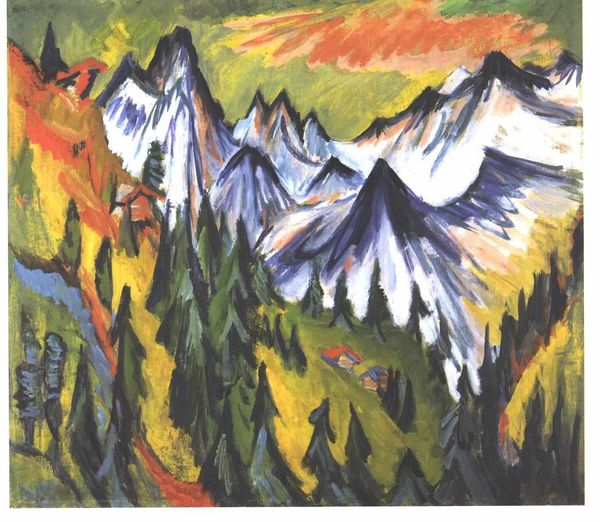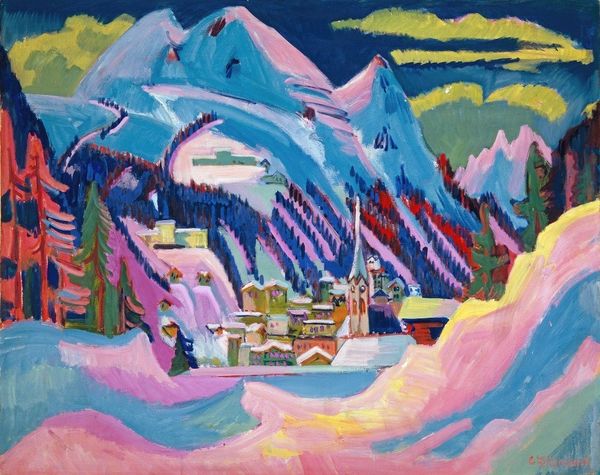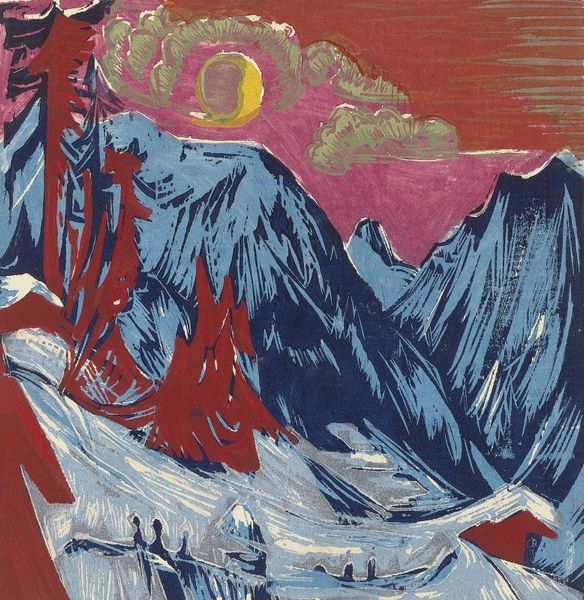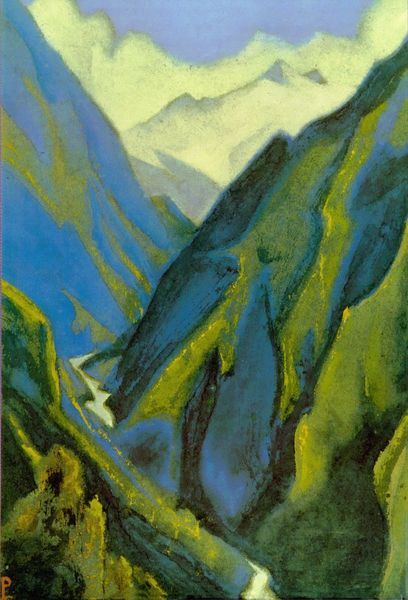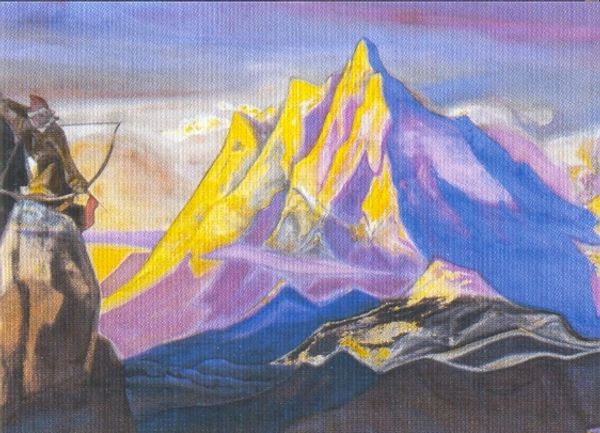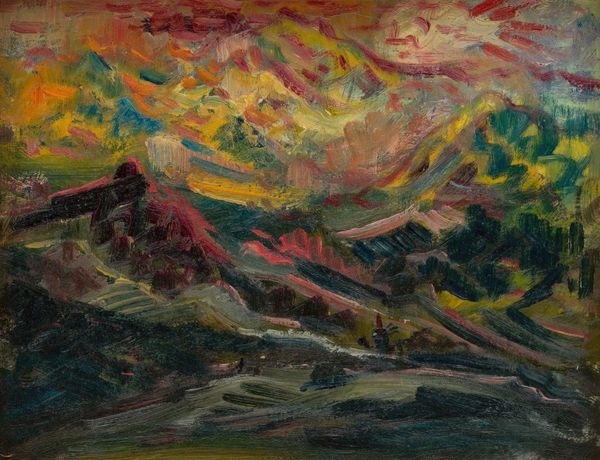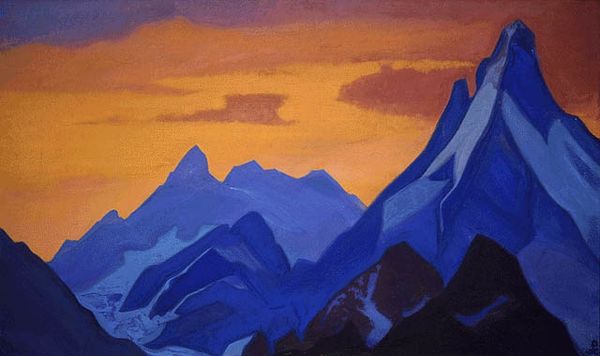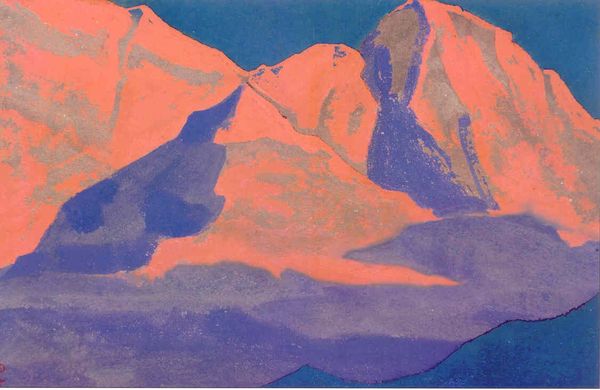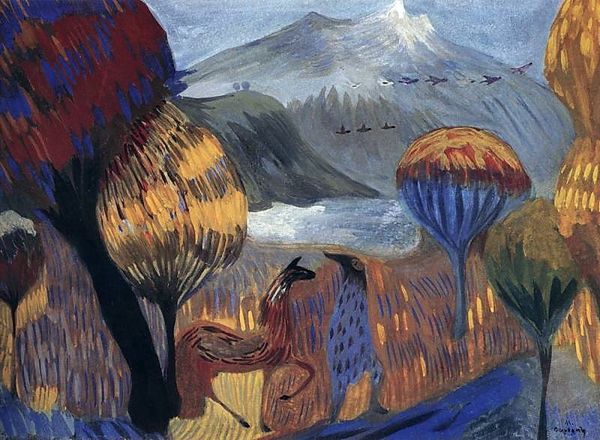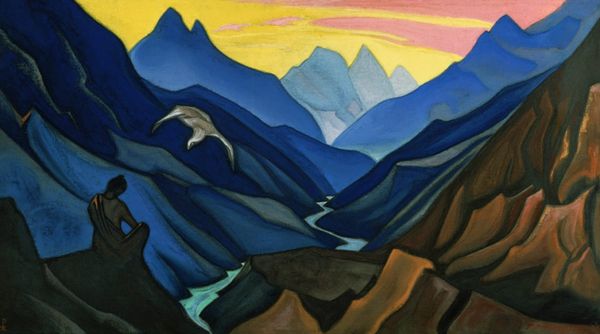
Copyright: Public domain
Editor: Here we have Ernst Ludwig Kirchner's "Winter Landscape in Moonlight," painted in 1919. It's an oil painting depicting a winter mountain scene. What strikes me most is the vibrant, almost unnatural color palette. What can you tell us about this work? Curator: Note how Kirchner employs color not descriptively, but expressively. The scene is dominated by blues and violets, offset by the vibrant oranges and pinks in the sky and trees. Consider the brushstrokes – how they build texture and contribute to the emotional intensity of the piece. Does this intentional color and deliberate execution say something more to you? Editor: I see that the colors create a very disorienting atmosphere, kind of menacing. Are you saying the artist wasn’t necessarily trying to realistically depict the landscape but rather evoke a feeling? Curator: Precisely. Kirchner is less concerned with mimetic representation and more invested in conveying a subjective experience. This skewed perspective and expressive application of color serves to underscore the emotional content. Look how the composition emphasizes angular forms. Editor: That makes sense. I am wondering how the structure relates to Expressionism. Curator: The angularity disrupts any sense of placid beauty one might expect in a traditional landscape, furthering a feeling of anxiety, but with the painting existing only in and of itself. How can this anxiety enhance our viewing experience? Editor: So it’s like the artist uses visual forms to channel psychological tension and we are meant to appreciate this approach? Curator: Correct. It’s about deciphering that language to grasp its essence. Through this technique we can enjoy and reflect on art from varying perspectives. Editor: Thank you, I never considered this! This painting appears so much more complex than my first impression.
Comments
No comments
Be the first to comment and join the conversation on the ultimate creative platform.
